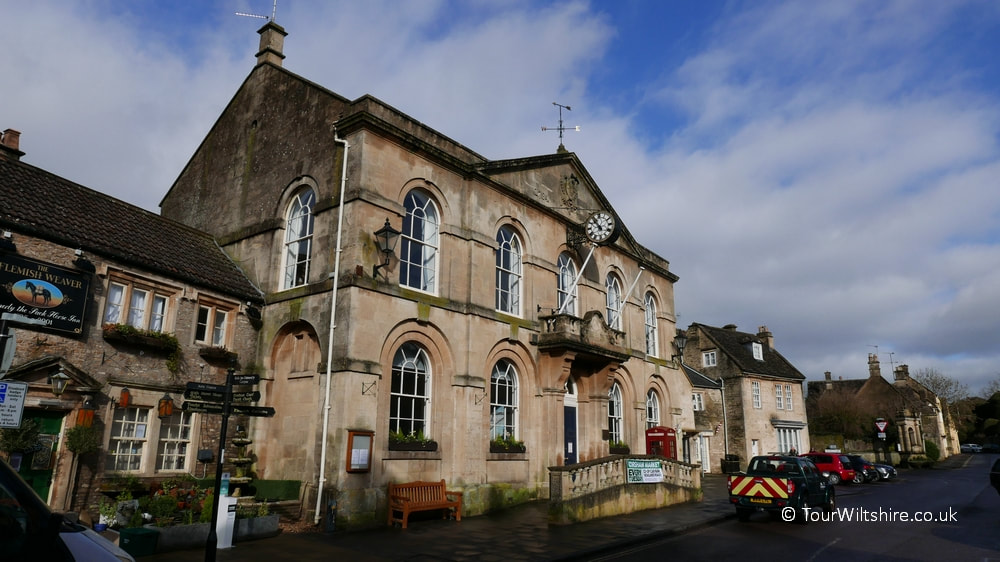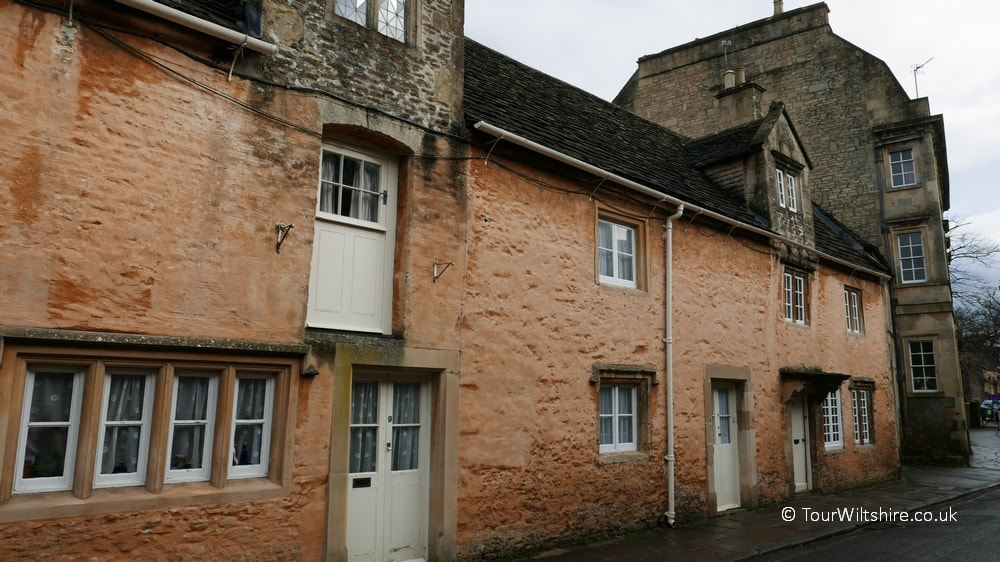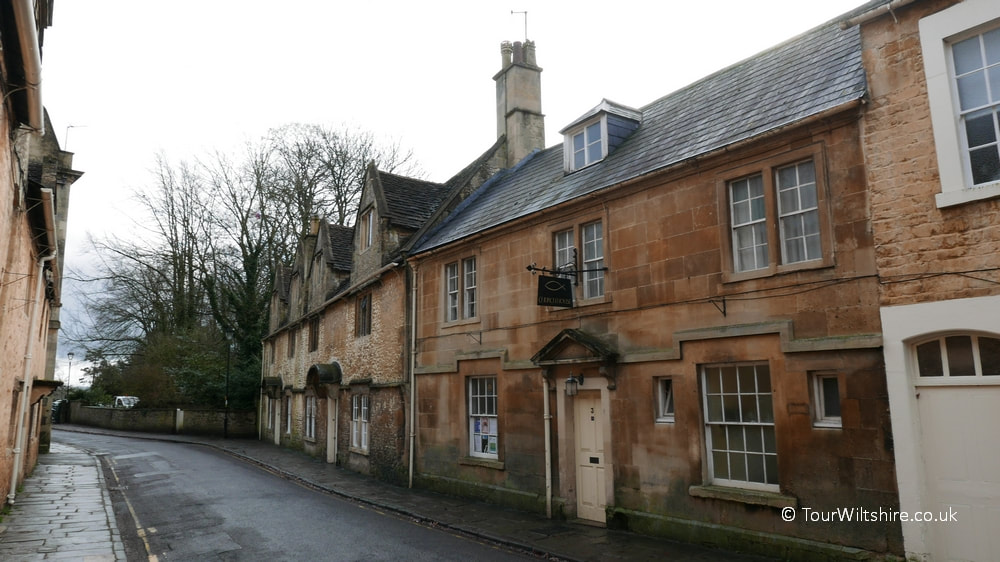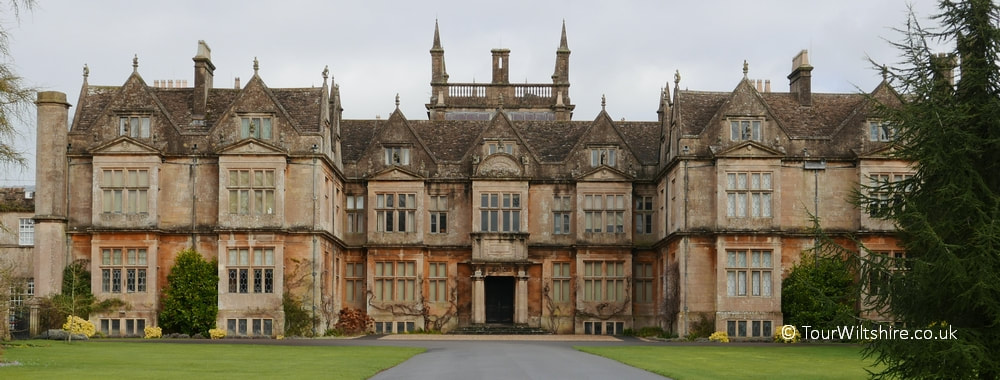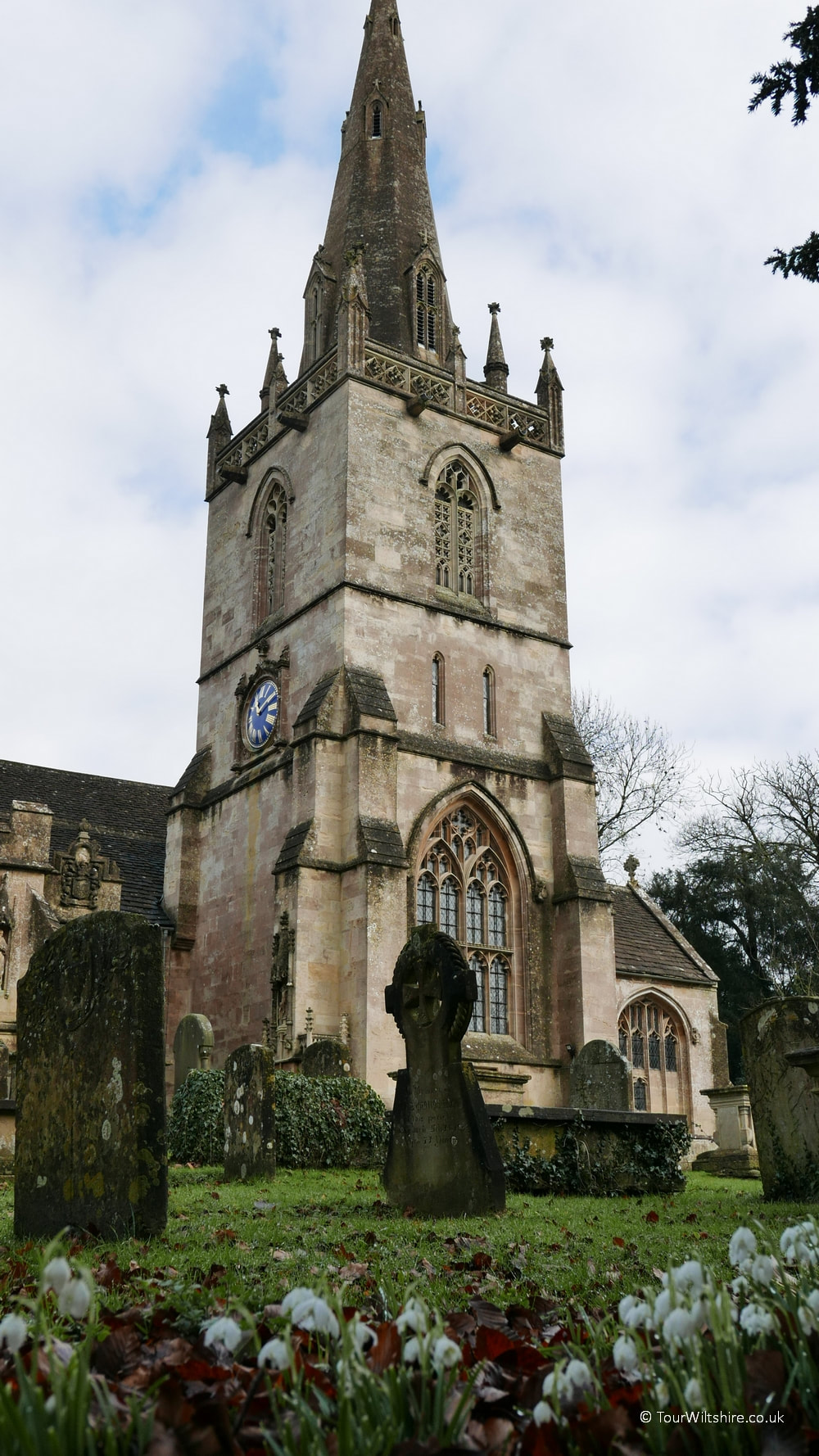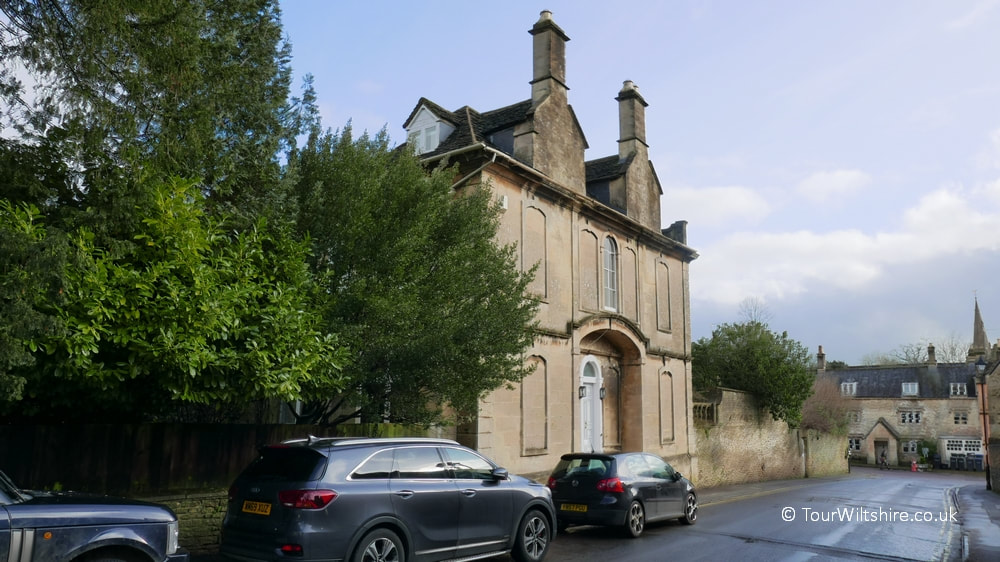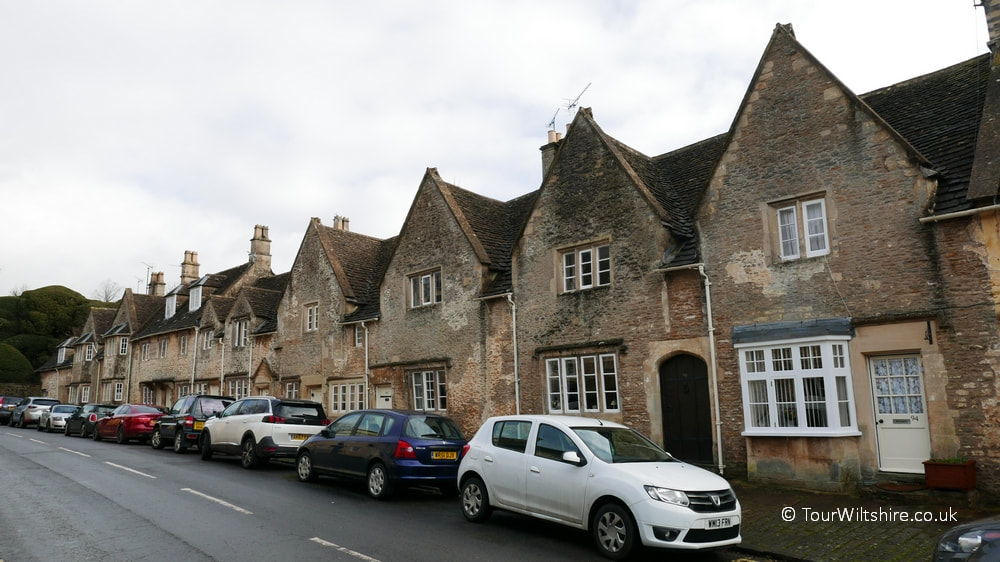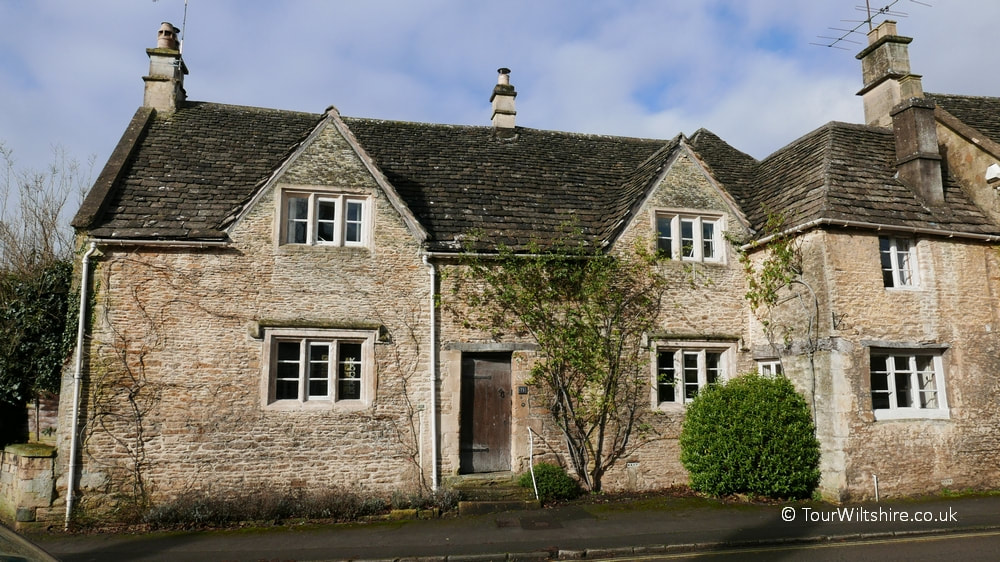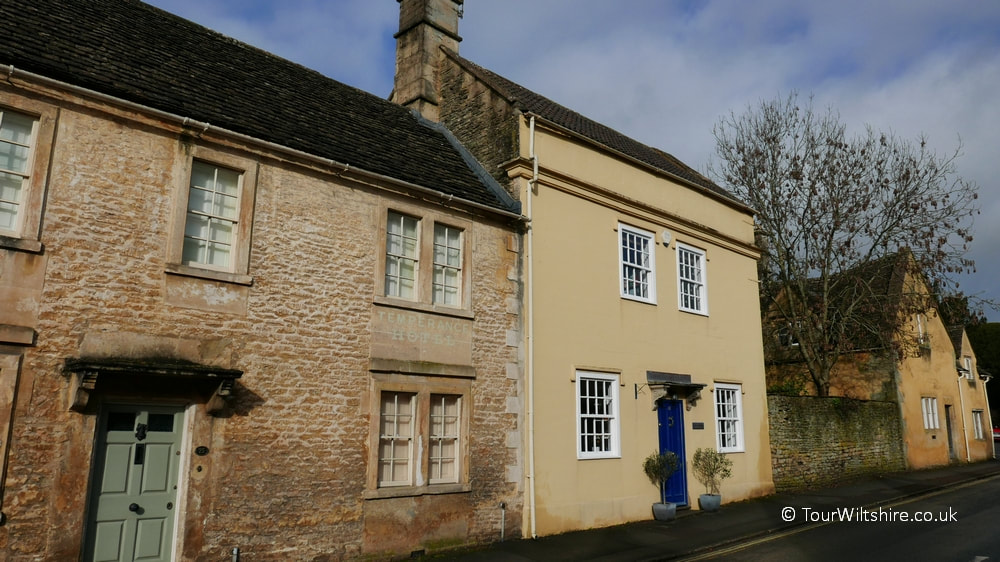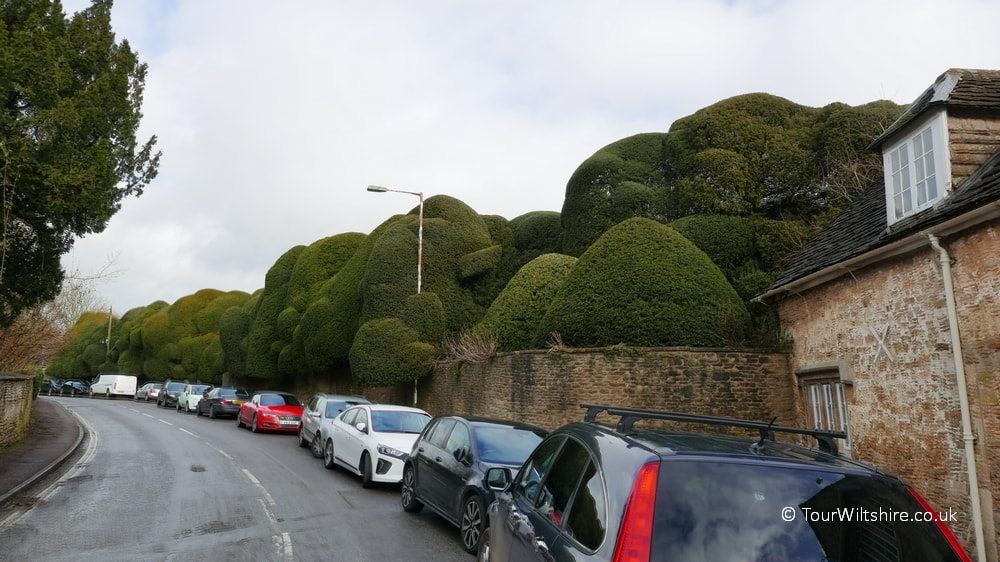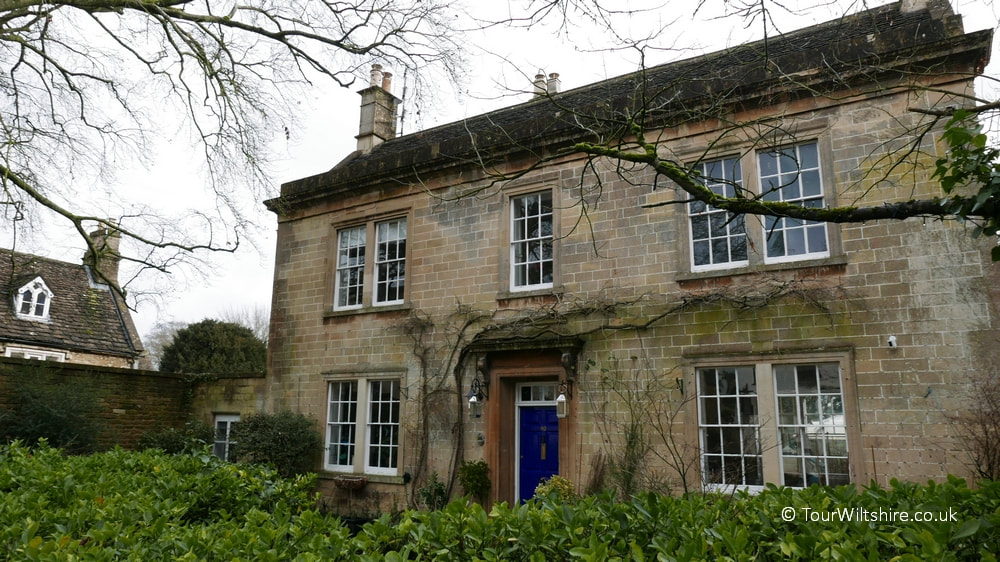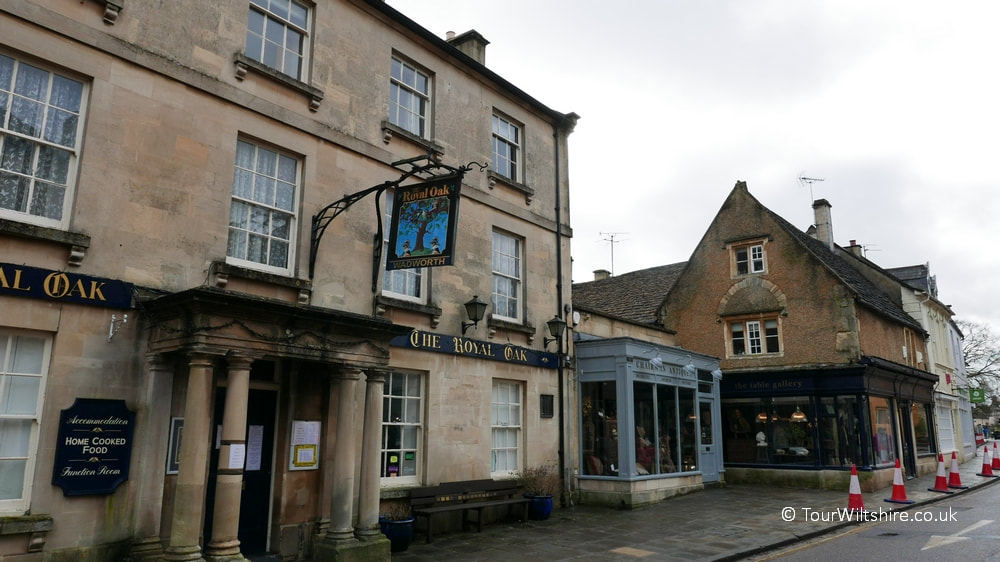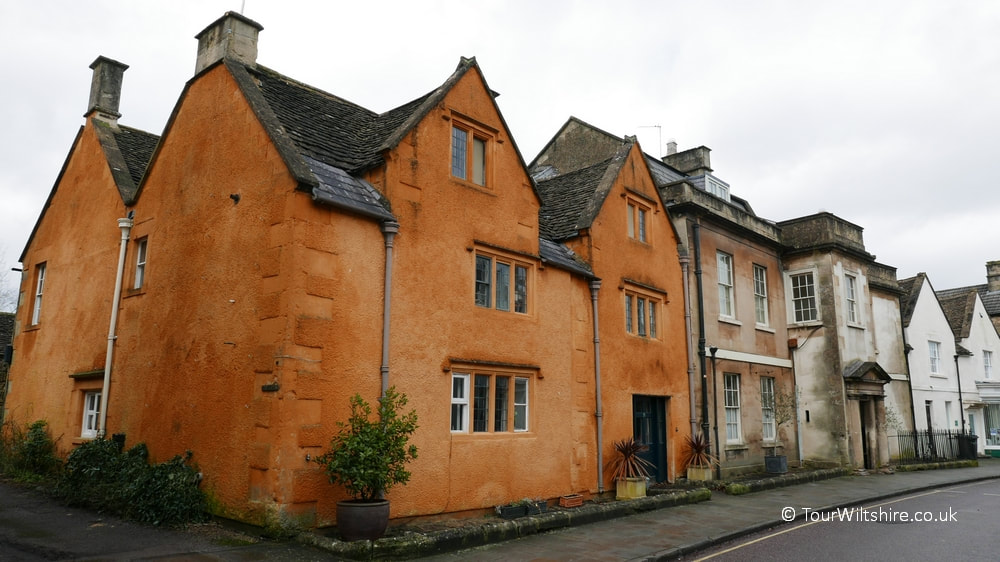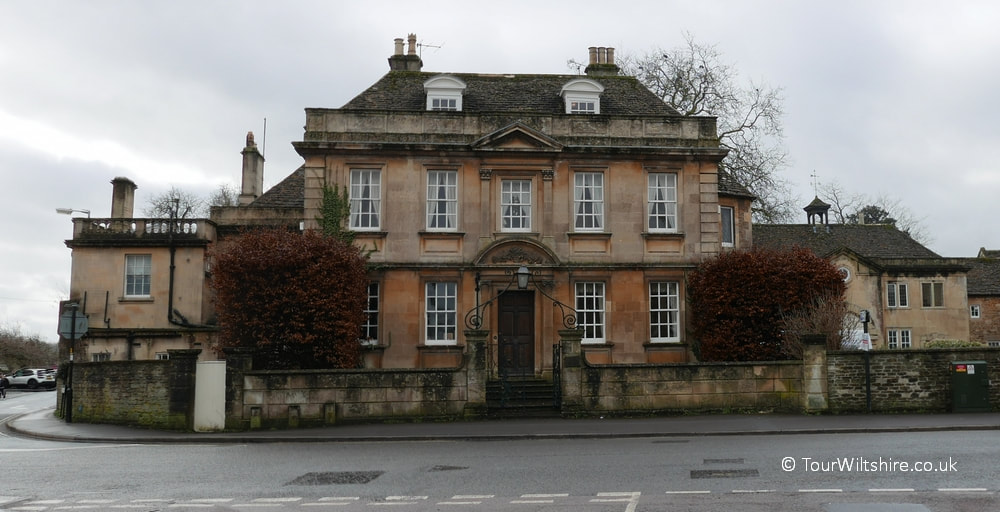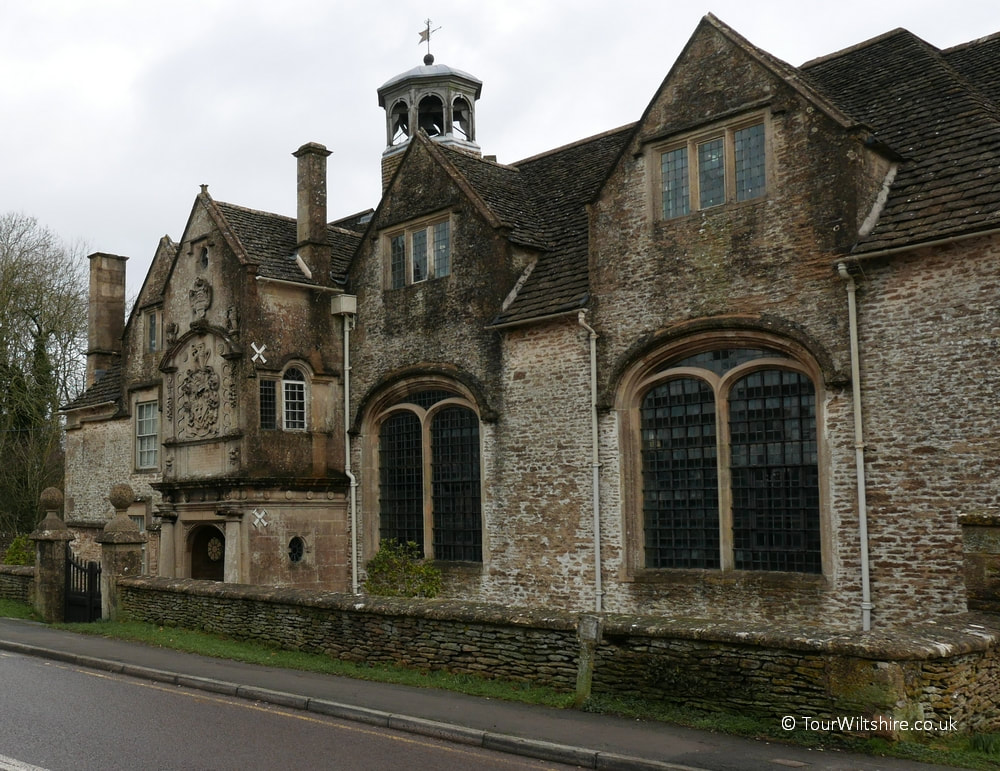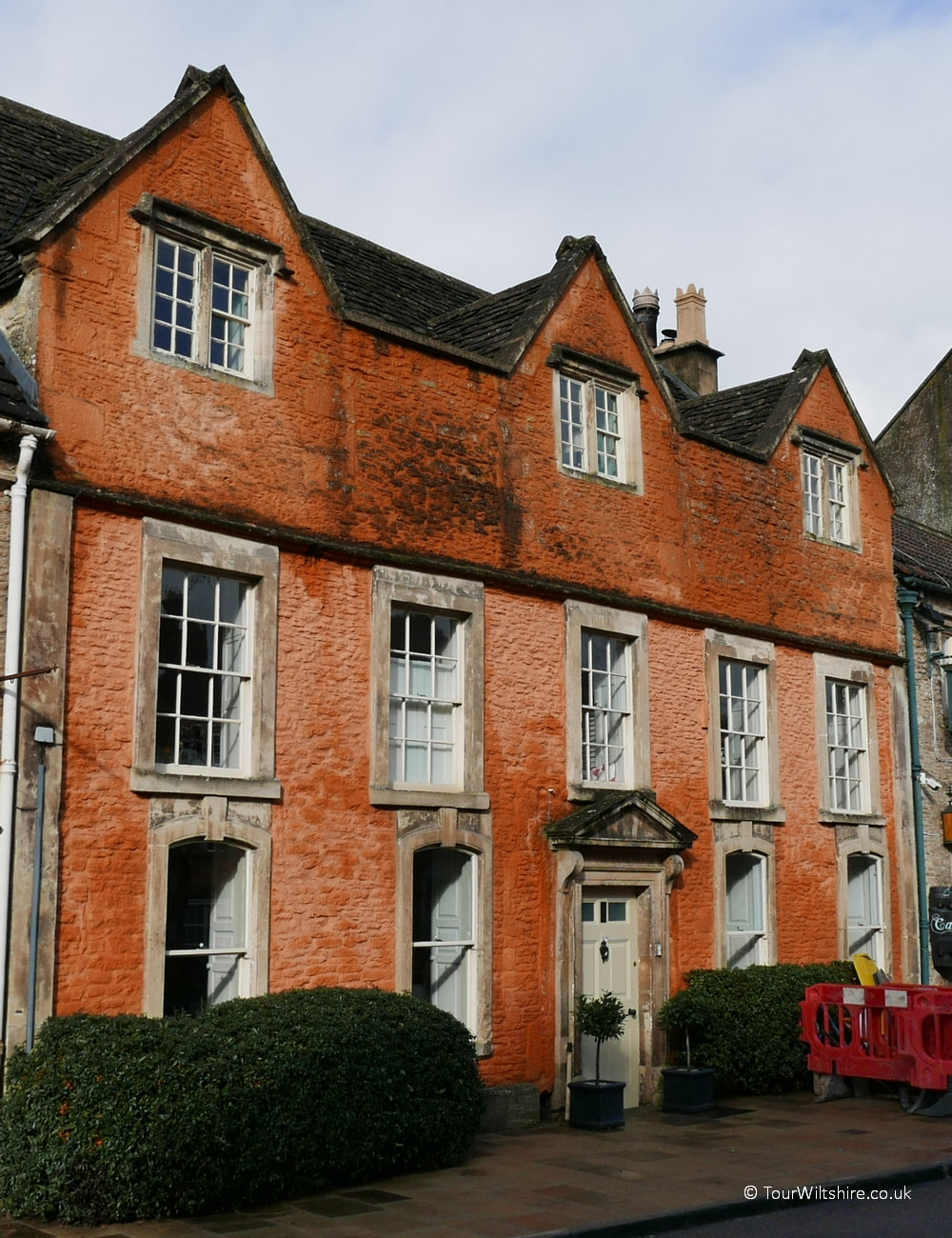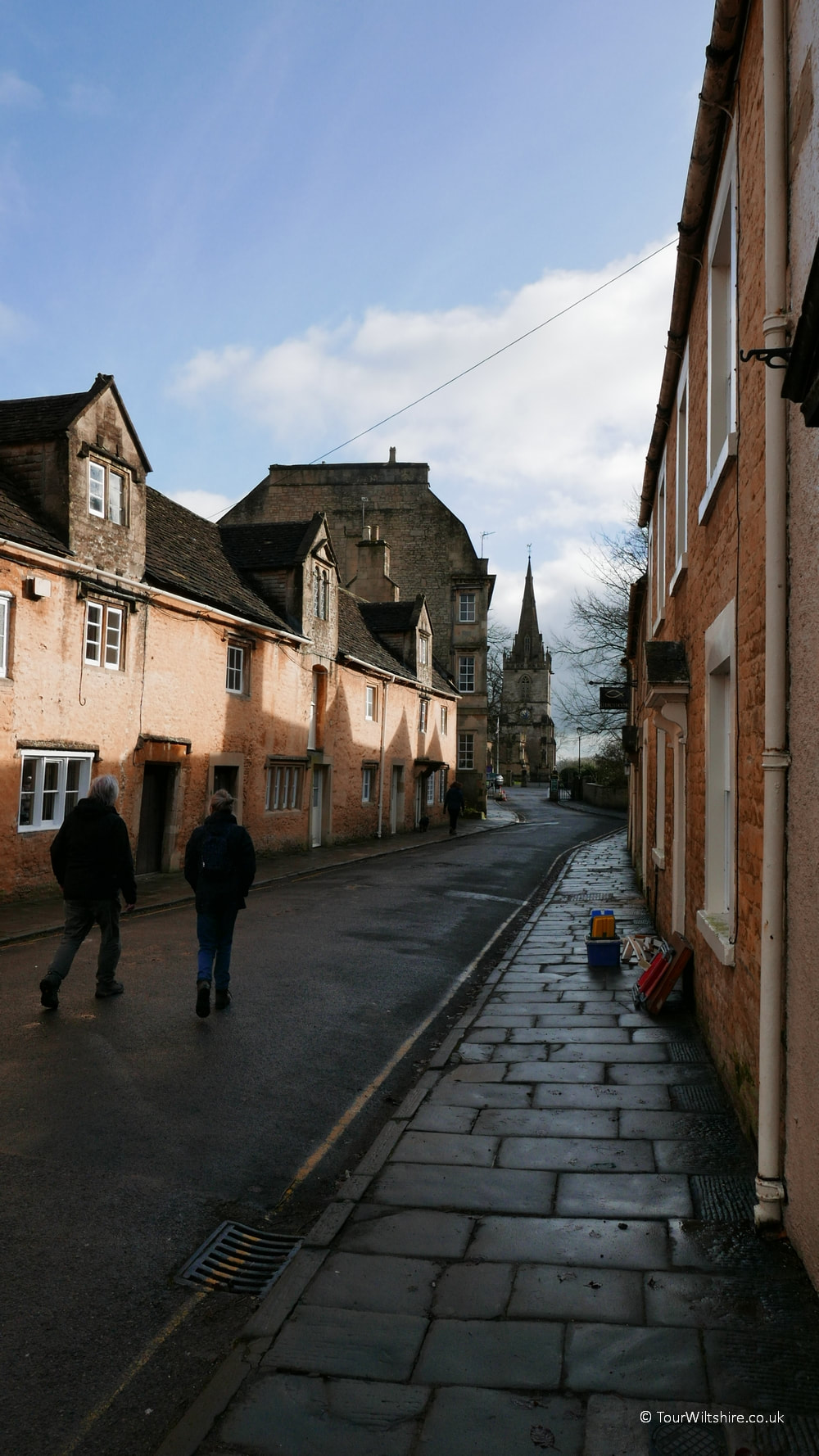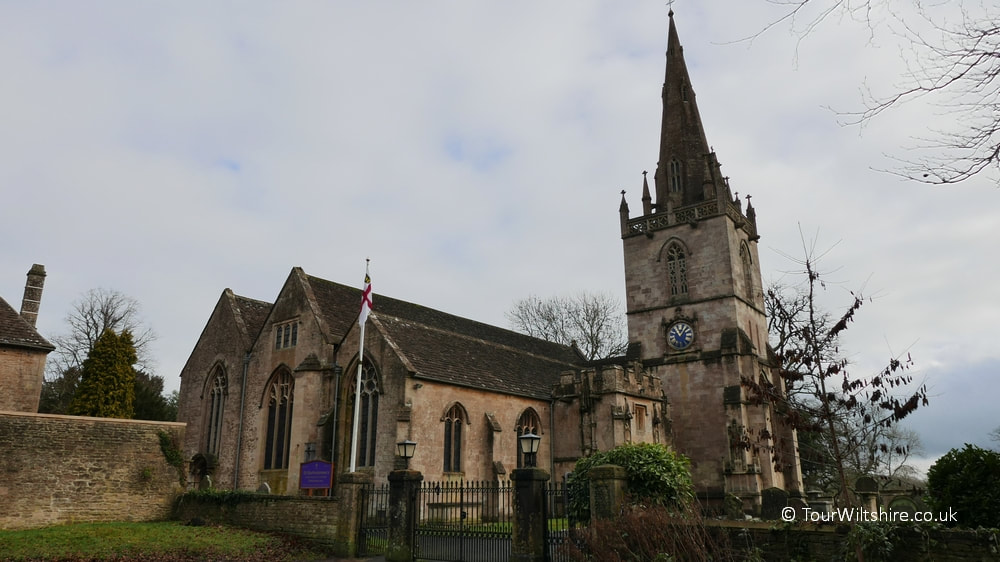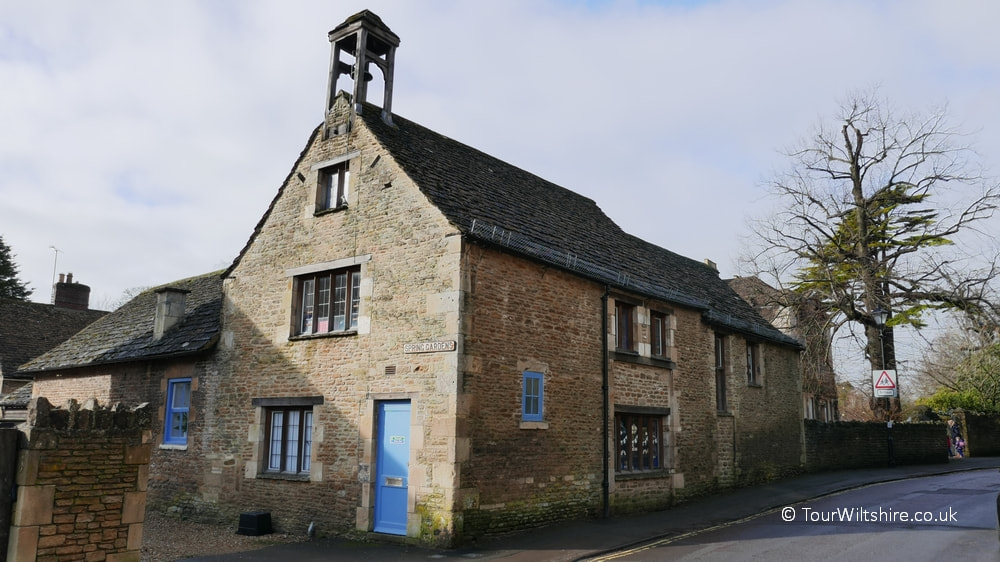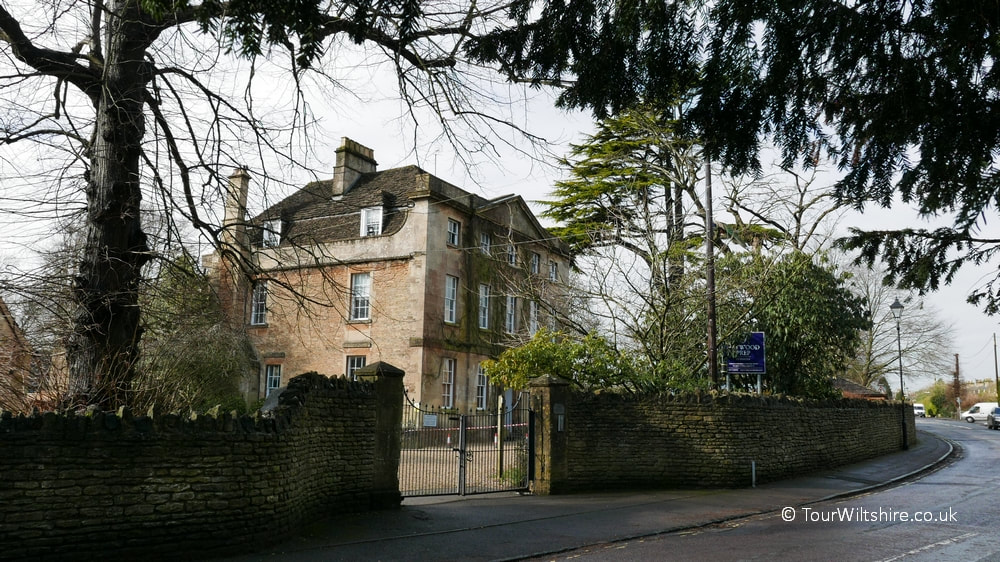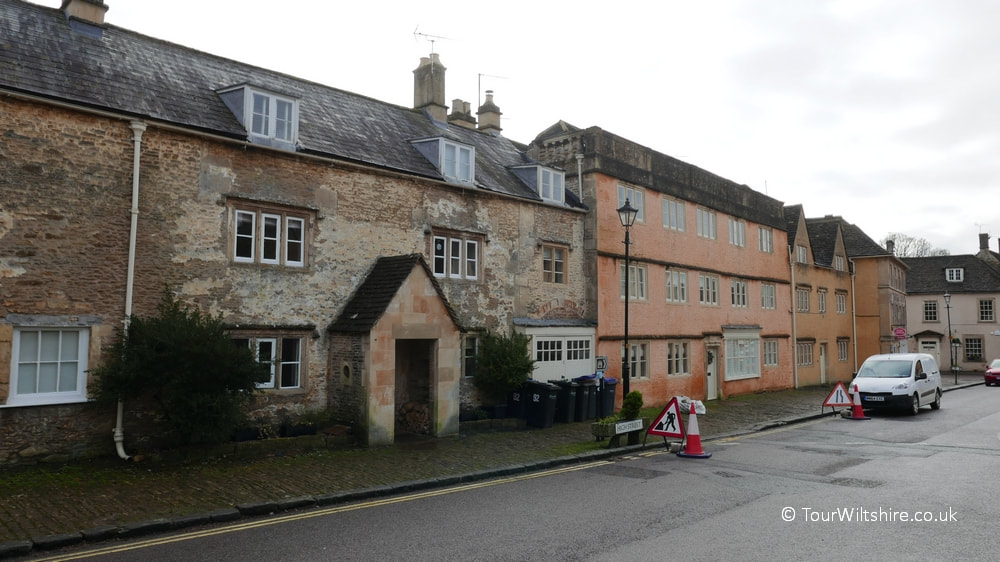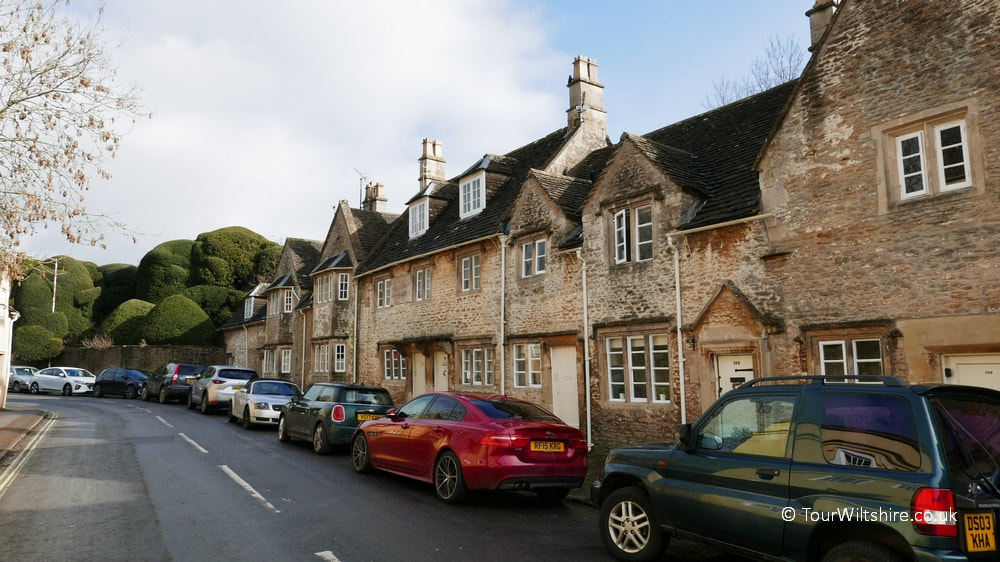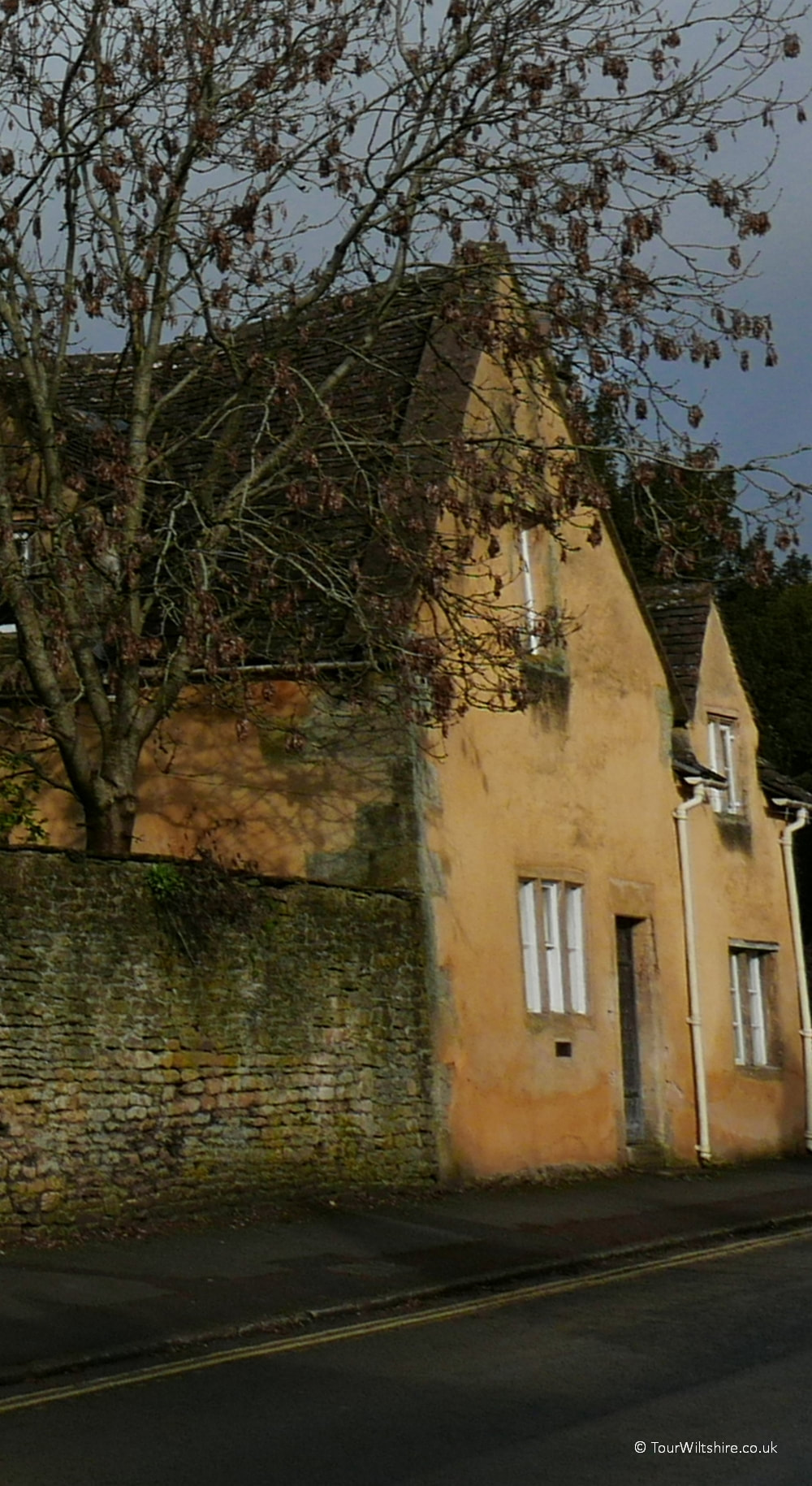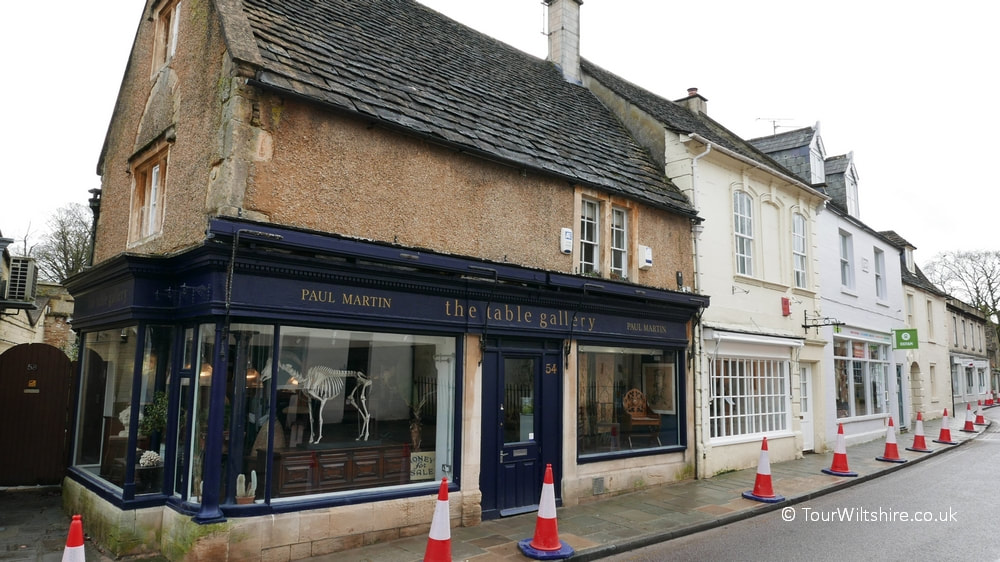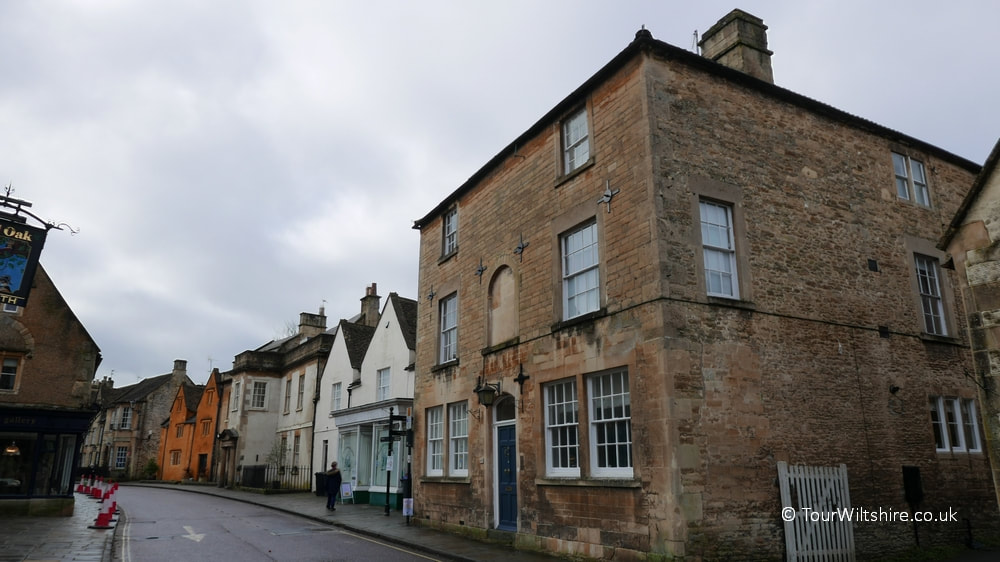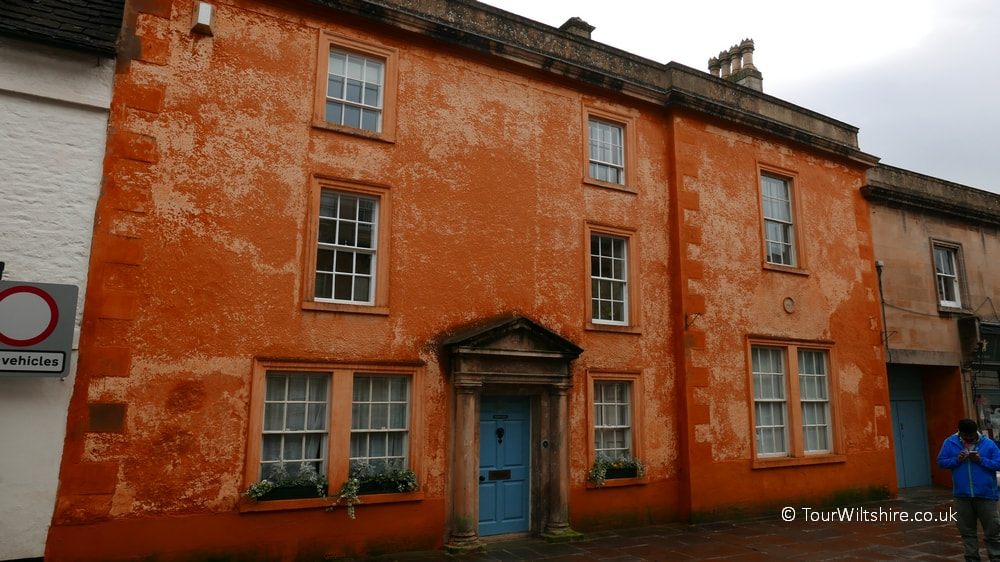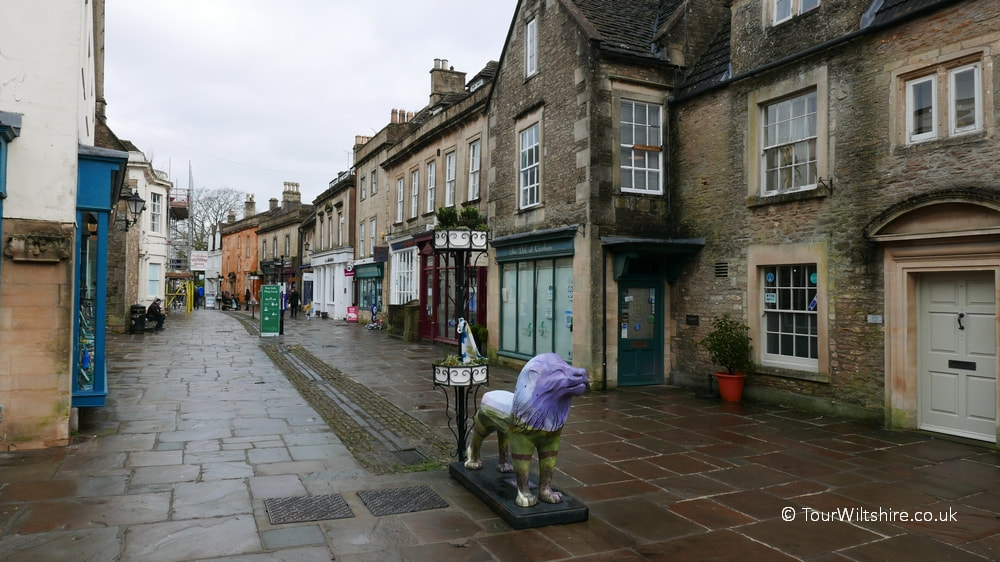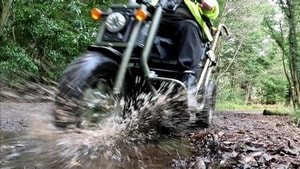⭐⭐⭐⭐
Corsham, Wiltshire
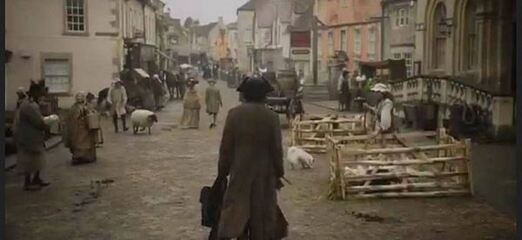 Corsham was used to depict Truro in the TV series 'Poldark'.
Corsham was used to depict Truro in the TV series 'Poldark'.
Corsham is at the south-western edge of the Cotswolds and with 408 Corsham is second only to Salisbury (644) for the number of Listed buildings, especially impressive as it has a population of only around 5,000 people. With more than 60 Listed buildings on the High Street alone of all the attractive high streets in Wiltshire it's hard to beat Corsham's for beauty. Particularly don't miss: Numbers 94 to 112, Grade II* Listed houses known as the "Flemish Weavers Houses", The Old Bank House, unmissable with its lovely orangey/pink colour wash, and at the southern end of the High Street look across at the Grade II* The Grove house, in Priory Street see The Ivy, Grade II*, and try to time your visit with the excellent Corsham Court being open. When the Wiltshire Buildings Record had the opportunity to exam the roof of No.11 High Street, Corsham, a building officially Grade II Listed as 17th century, it found evidence of it actually being a 15th century timber framed building having been later updated, further research is hoped to be done to see if the town has many other properties are older than previously thought.
Historically, Corsham's main employment was in agriculture and the wool industry, and still quarries Bath Stone, recently the 18th century Mansion House, in the centre, has been extended and converted from a youth centre to a digital hub named 'Corsham Digital Mansion'.
During the Second World War, and the Cold War, Corsham was a major administrative and manufacturing centre for the Ministry of Defence, with numerous establishments both above ground and in disused quarry tunnels. Today MOD Corsham includes the secretive Global Operations Security Control Centre, the Joint Security Co-ordination Centre and Joint Forces Command’s Information Systems and Services, helping to protect the Uk from cyber attacks.
There are plenty of good places to eat in Corsham, including The Flemish Weaver, and Mother & Wild.
Film/TV Location For: Poldark - Corsham High Street doubled as Truro; Tess of the D’Urbervilles; Remains of the Day (Corsham Court), and The Suspicions Mr Whicher.
Historically, Corsham's main employment was in agriculture and the wool industry, and still quarries Bath Stone, recently the 18th century Mansion House, in the centre, has been extended and converted from a youth centre to a digital hub named 'Corsham Digital Mansion'.
During the Second World War, and the Cold War, Corsham was a major administrative and manufacturing centre for the Ministry of Defence, with numerous establishments both above ground and in disused quarry tunnels. Today MOD Corsham includes the secretive Global Operations Security Control Centre, the Joint Security Co-ordination Centre and Joint Forces Command’s Information Systems and Services, helping to protect the Uk from cyber attacks.
There are plenty of good places to eat in Corsham, including The Flemish Weaver, and Mother & Wild.
Film/TV Location For: Poldark - Corsham High Street doubled as Truro; Tess of the D’Urbervilles; Remains of the Day (Corsham Court), and The Suspicions Mr Whicher.
Excerpts From The Wiltshire Council Timeline Of Corsham (scroll)
600s - Stone has been quarried at Corsham from this time
900s - King Ethelred owns a country palace in Corsham
1086 - Domesday Book records Corsham as a royal manor with a church and 2 mills, about 240 acres in size. The population is between 600 and 640.
1582 - Thomas Smythe builds Corsham Court on the site of the old manor house
1600s - The cloth industry flourishing as a home industry controlled by clothiers
1668 - Lady Margaret Hungerford Almshouses and a free school built, endowed by Lady Margaret, widow of Sir Edward Hungerford (see photo)
Early 1700s - From this time Bath stone is quarried on a large scale for building purposes
1728 - Poor House established, closed 1836
1760 - Lancelot 'Capability' Brown employed to enlarge the park and house at Corsham Court
1800 - John Nash employed to enlarge the house at Corsham Court: cloth industry ceases
1801 - Census records 2,402 inhabitants
C.1830 - Charles Dickens stayed at the Hare and Hounds in Pickwick. Believed to be the inspiration for The Pickwick Papers published in 1936
1841 - Box railway tunnel, built for the Great Western Railway by Isambard Kingdom Brunel, completed. At two miles long it was the longest tunnel at the time. 4,000 workmen and 300 horses were brought into Corsham to construct the tunnel: Corsham Railway Station built
1848 - There are about 20 shops in the town
1850-1910 - Stone quarrying flourishing
1862 - By this time there are over 5 miles of underground quarry roadways
1889 - Corsham Waterworks opened and first piped water supply provided
1900 - By this time there are 60 miles of underground quarry roadways
1905 - First motor bus in Corsham on the route between Bath and Chippenham
1914-1919 - Town Hall used as a hospital
1930s - Stone quarrying in decline: Regal Cinema opens
1936 - Construction of the Central Ammunitions Depot underground in disused mines begins
1937 - A gas-mask factory opened in the old Pickwick School premises
1939-1945 - Corsham Court used as a convalescent home during World War II and old underground quarries used for aircraft parts manufacture
1943 - Corsham Centre opened as a cinema and canteen for munitions workers: Olga Lehmann paints murals in 6 canteens in the underground tunnels
1950s - Burlington Bunker prepared in the underground tunnels to house 4000 central government personnel in the event of a nuclear war
1986-1995 - Camilla Parker-Bowles (later HRH The Duchess of Cornwall) lives at Middlewick House
2001 - Census records 10,780 inhabitants
900s - King Ethelred owns a country palace in Corsham
1086 - Domesday Book records Corsham as a royal manor with a church and 2 mills, about 240 acres in size. The population is between 600 and 640.
1582 - Thomas Smythe builds Corsham Court on the site of the old manor house
1600s - The cloth industry flourishing as a home industry controlled by clothiers
1668 - Lady Margaret Hungerford Almshouses and a free school built, endowed by Lady Margaret, widow of Sir Edward Hungerford (see photo)
Early 1700s - From this time Bath stone is quarried on a large scale for building purposes
1728 - Poor House established, closed 1836
1760 - Lancelot 'Capability' Brown employed to enlarge the park and house at Corsham Court
1800 - John Nash employed to enlarge the house at Corsham Court: cloth industry ceases
1801 - Census records 2,402 inhabitants
C.1830 - Charles Dickens stayed at the Hare and Hounds in Pickwick. Believed to be the inspiration for The Pickwick Papers published in 1936
1841 - Box railway tunnel, built for the Great Western Railway by Isambard Kingdom Brunel, completed. At two miles long it was the longest tunnel at the time. 4,000 workmen and 300 horses were brought into Corsham to construct the tunnel: Corsham Railway Station built
1848 - There are about 20 shops in the town
1850-1910 - Stone quarrying flourishing
1862 - By this time there are over 5 miles of underground quarry roadways
1889 - Corsham Waterworks opened and first piped water supply provided
1900 - By this time there are 60 miles of underground quarry roadways
1905 - First motor bus in Corsham on the route between Bath and Chippenham
1914-1919 - Town Hall used as a hospital
1930s - Stone quarrying in decline: Regal Cinema opens
1936 - Construction of the Central Ammunitions Depot underground in disused mines begins
1937 - A gas-mask factory opened in the old Pickwick School premises
1939-1945 - Corsham Court used as a convalescent home during World War II and old underground quarries used for aircraft parts manufacture
1943 - Corsham Centre opened as a cinema and canteen for munitions workers: Olga Lehmann paints murals in 6 canteens in the underground tunnels
1950s - Burlington Bunker prepared in the underground tunnels to house 4000 central government personnel in the event of a nuclear war
1986-1995 - Camilla Parker-Bowles (later HRH The Duchess of Cornwall) lives at Middlewick House
2001 - Census records 10,780 inhabitants
|
|

